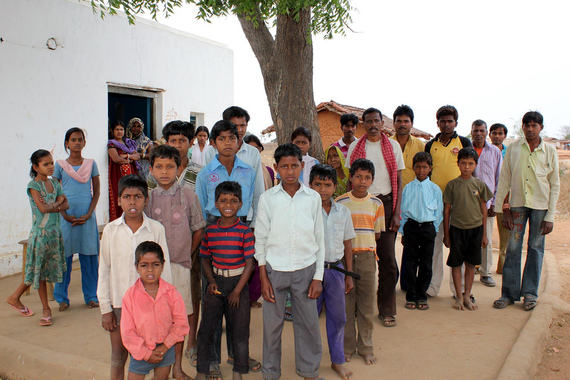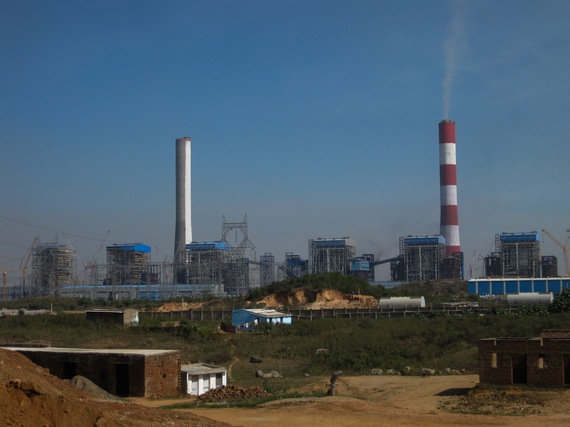
Sudarshan Rajak disappeared under suspicious circumstances after protesting the relocation of families for Reliance Power's 4,000-megawatt Sasan coal project in Singrauli, India. Some of his neighbors believe he was in his house when it was bulldozed by Reliance. Krishna Das Saha's home was destroyed in the middle of the night -- while his family was still living in it -- to make way for Sasan's coal ash pond. And when Sati Prasad challenged Reliance's refusal to hire local workers, he was dragged out of his home and beaten by the police.
These are just a few people who have met violence and intimidation at the hands of Reliance Power. This aggression is subsidized U.S. tax dollars in the form of over $900 million in financing from the U.S. Export-Import Bank (Ex-Im). Indian groups have documented these and other abuses in Sasan Ultra Mega Power Project, Singrauli, Madhya Pradesh: A Brief Report.
Ex-Im has turned a deaf ear to the allegations against the project, but it appeared as though the Office of the Inspector General (OIG) -- the independent investigative body for Ex-Im -- was prepared to listen. Now, we are not so sure
This week, the OIG traveled to Singrauli as part of its inspection of Sasan. While the two OIG representatives were happy to make arrangements to travel to Singrauli in a Reliance helicopter -- plans they later had to amend due to rain -- they refused to meet with the affected people, claiming that meeting in the communities would make the OIG appear biased. Instead, the OIG summoned a small group of local people to their hotel at 7:30 in the morning while Reliance officials waited outside and could see which villagers came to meet with the OIG.
This is flat out wrong. By holding the meetings at the hotel instead of in the communities, as was originally requested, the OIG put villagers who are concerned about the project at future risk.
Moreover, the OIG has an obligation to follow-up on complaints from affected people. Ex-Im classified Sasan as a Category A project, which means that it is required to comply with additional standards, including the International Finance Corporation's Performance Standards for environmental and social impacts, labor and working conditions, pollution prevention, community health and resettlement. The OIG is abdicating its responsibility if it ignores the human impacts and restricts its inspection to the Ex-Im standards for the export of equipment and other weaker benchmarks.

I personally met with affected communities and retold their stories to officials at Ex-Im -- including alerting the Bank officials to a smokestack collapse that killed 30 workers as well as irregularities in coal allotments. These irregularities foreshadowed the coal-gate scandal, which later rocked India and forced then Prime Minister Manmohan Singh to defend himself to Parliament.
But instead of using their trip to listen to the people affected by Sasan, the OIG was only willing to take a tour of the sites by car, where they could view the communities out the windows while refusing to stop and talk to them. Unsurprisingly, the community members felt this was unacceptable.
This is not justice.
The OIG does not currently have a process for this type of inspection, but other institutions do. Last week, Civil Society Organizations sent a letter to the OIG outlining how to conduct an objective and complete report, using the process employed by the Compliance Advisor/Ombudsman (CAO) of the World Bank Group's International Finance Corporation as a guideline. This includes conducting follow-up visits to meet with affected people in their communities and employing third party experts to assess the impacts.
Will the OIG step up and conduct an impartial inspection? Or will it aid in the suppression of the impacted communities?
If the OIG chooses the latter, they will receive a rude awakening. Local residents have shown time and time again that they will not be silenced.

Authored by:
Justin Guay
Justin Guay leads the Beyond Coal to Clean Energy work for the Sierra Club’s International Climate Program and is based in San Francisco. He works on international energy lending reform and international outreach for the organization with a focus on the Asia-Pacific Region. He has previously lived in Mumbai and spent time working with social entrepreneurs on distributed clean energy ...
No comments:
Post a Comment